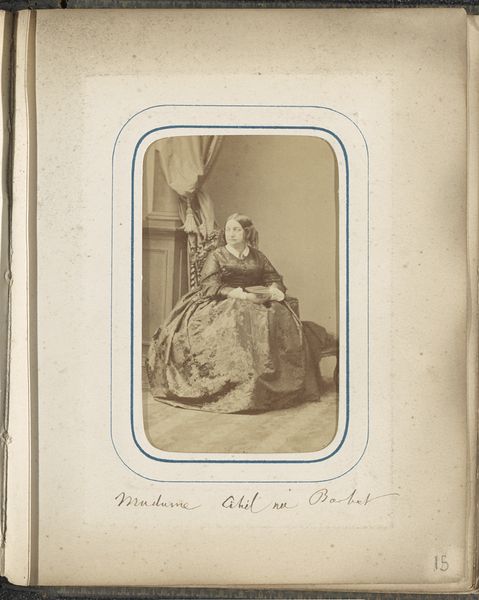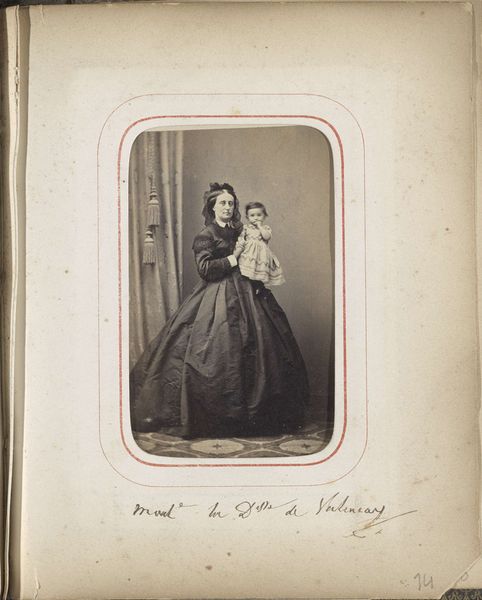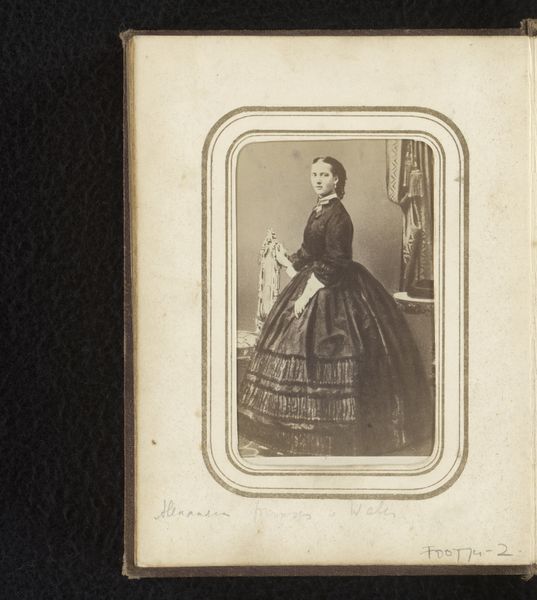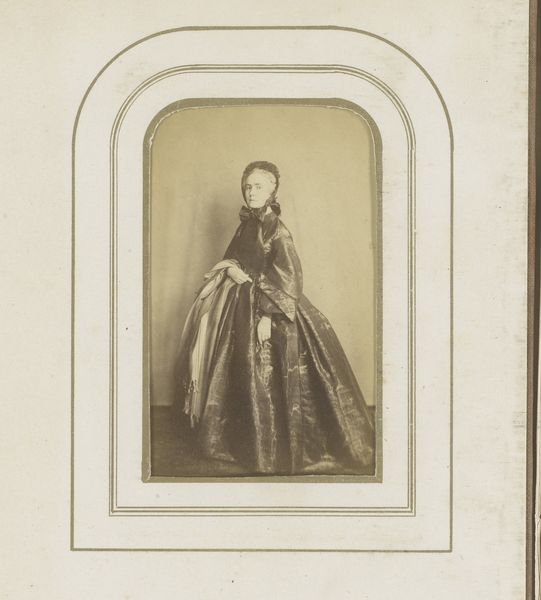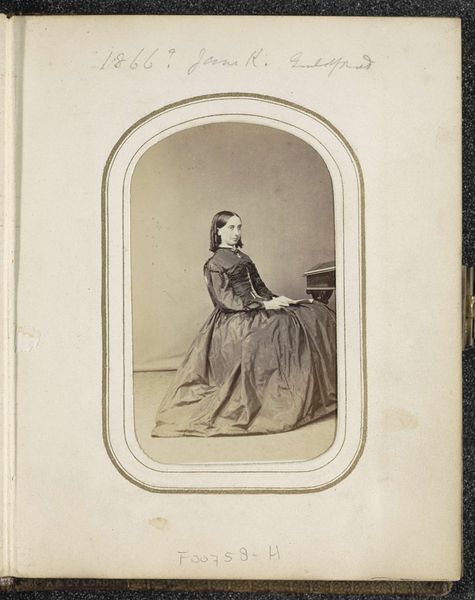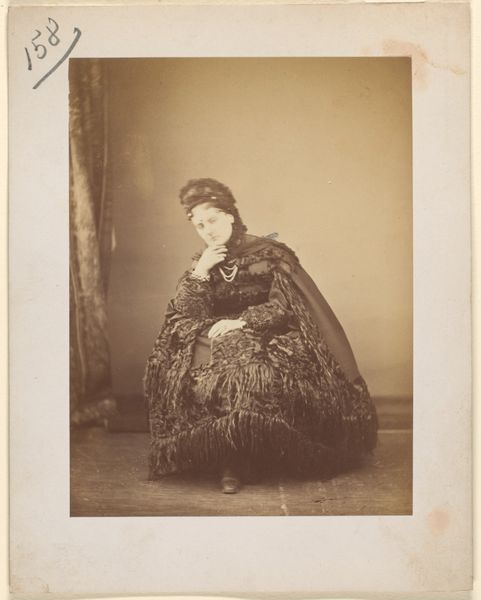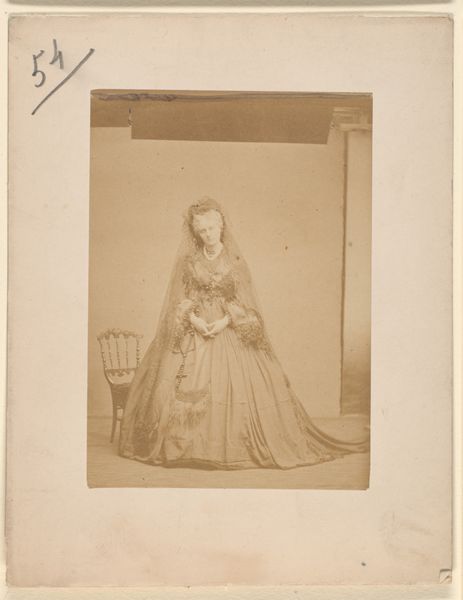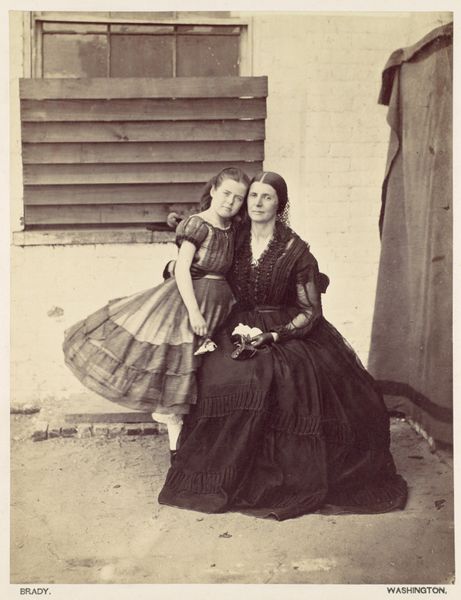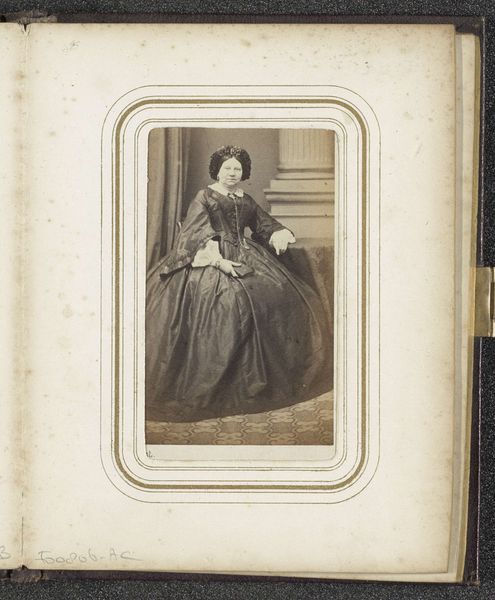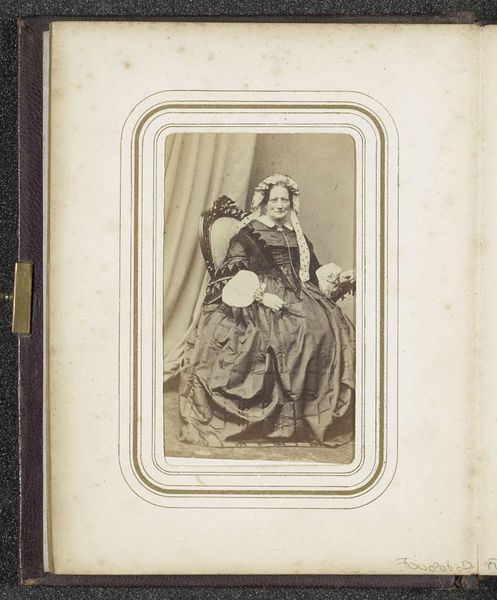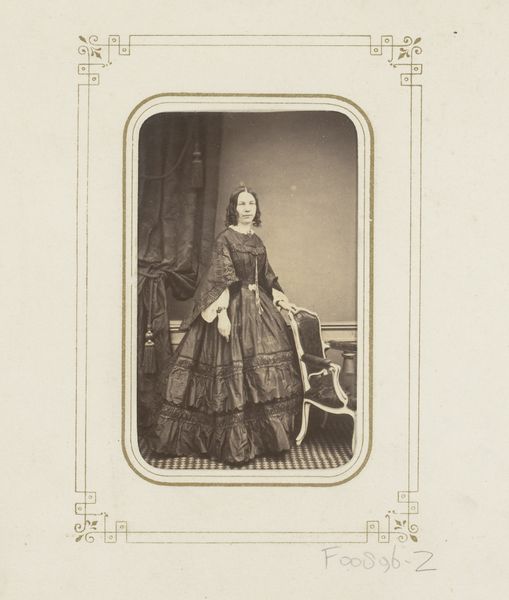
Mrs. Greenhow and Daughter, Imprisoned in the Old Capitol, Washington 1862
0:00
0:00
Copyright: Public Domain
Curator: This photograph, taken in 1862 by Alexander Gardner, is entitled "Mrs. Greenhow and Daughter, Imprisoned in the Old Capitol, Washington." It’s a gelatin silver print, a somber yet intimate portrayal. Editor: Yes, intimate is the word. You immediately sense the vulnerability, a very staged vulnerability to be sure, but vulnerability nonetheless. It’s a small photograph, but packs an emotional punch, wouldn't you say? Curator: Absolutely. And the image tells a potent story, considering the historical context. Rose Greenhow was a renowned Confederate spy, arrested for her activities and imprisoned with her young daughter in the Old Capitol Prison. Editor: The public role of photographs like this one during the Civil War cannot be overstated. It shaped perceptions. How deliberate that this was styled almost as a history painting to manipulate the viewer! Curator: Indeed, there’s a tension between documenting reality and crafting a narrative. Was Gardner trying to elicit sympathy for Greenhow or simply record her imprisonment? This photograph walks a precarious line, as propaganda, maybe? Editor: I see it very much as carefully orchestrated visual propaganda during a period of deep societal and political fissure. Note how Greenhow’s dark dress sharply contrasts with her daughter's lighter, frillier one and how both consciously adopt demure and composed stances that subvert any perceived threat posed by this mother-daughter alliance. Curator: And her pose, clasping a small bouquet of flowers! It could signify defiance as well as loss or fragility. This picture uses the romantic visual rhetoric associated with female victimhood at that period, but doesn’t fully buy into that sentiment. She had actively made dangerous choices. The gaze here resists co-option and easy categorization. Editor: True. This wasn’t just a recording of history. It participated in shaping historical understanding, and in turn, reinforces the complicated narratives of gender, war, and political affiliation of that moment. What do we see when we look at the image today? I think, still, power in female defiance during conflict. Curator: For me, it continues to challenge any simplistic understanding of patriotism and treason, as well as motherhood. A striking reminder that historical images can reveal not only the past but also how we grapple with it today.
Comments
No comments
Be the first to comment and join the conversation on the ultimate creative platform.
